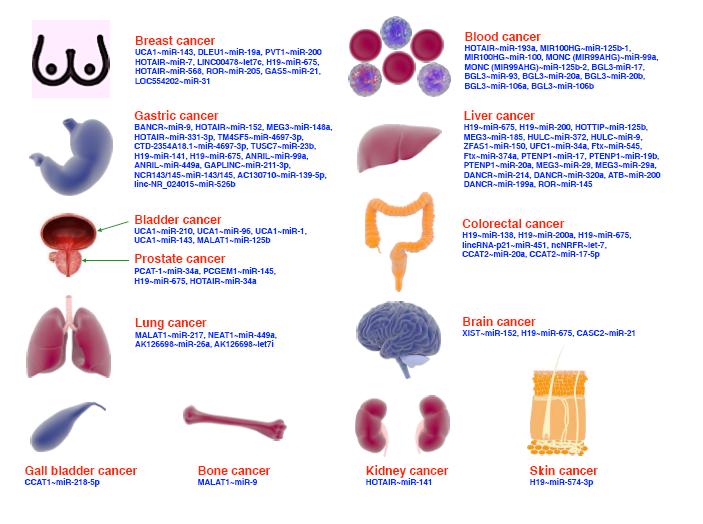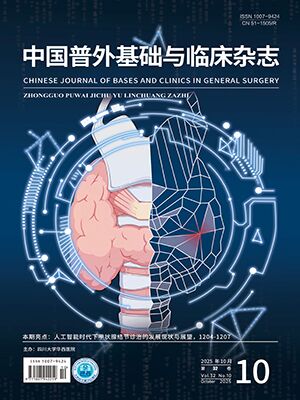| 1. |
何林烨, 王艺超, 李志辉. 2022年中国甲状腺癌流行情况分析: 基于《中国肿瘤登记年报》2005–2018年数据. 中国普外基础与临床杂志, 2024, 31(7): 790-795.
|
| 2. |
Bergenfelz A, Nordenström E, Almquist M. Morbidity in patients with permanent hypoparathyroidism after total thyroidectomy. Surgery, 2020, 167(1): 124-128.
|
| 3. |
lin dX, Zhuo XB, Lin Y, et al. Enhancing parathyroid preservation in papillary thyroid carcinoma surgery using nano-carbon suspension. Sci Rep, 2024, 14(1): 24680. doi: 10.1038/s41598-024-76126-1.
|
| 4. |
Uludag M, Cetinoglu I, Unlu MT, et al. The role of frozen section examination in thyroid surgery. Sisli Etfal Hastan Tip Bul, 2023, 57(4): 441-450.
|
| 5. |
McEntee PD, Greevy JE, Triponez F, et al. Parathyroid gland identification and angiography classification using simple machine learning methods. BJS Open, 2024, 8(5): zrae122. doi: 10.1093/bjsopen/zrae122.
|
| 6. |
Das K, Stone N, Kendall C, et al. Raman spectroscopy of parathyroid tissue pathology. Lasers Med Sci, 2006, 21(4): 192-197.
|
| 7. |
Paras C, Keller M, White L, et al. Near-infrared autofluorescence for the detection of parathyroid glands. J Biomed Opt, 2011, 16(6): 067012. doi: 10.1117/1.3583571.
|
| 8. |
Safia A, Abd Elhadi U, Massoud S, et al. The impact of using near-infrared autofluorescence on parathyroid gland parameters and clinical outcomes during total thyroidectomy: a meta-analytic study of randomized controlled trials. Int J Surg, 2024, 110(6): 3827-3838.
|
| 9. |
Pace-Asciak P, Russell J, Solorzano C, et al. The utility of parathyroid autofluorescence as an adjunct in thyroid and parathyroid surgery 2023. Head Neck, 2023, 45(12): 3157-3167.
|
| 10. |
Nagururu NV, Ali KM, Seo S, et al. Handheld autofluorescence imaging system for intraoperative parathyroid detection. VideoEndocrinology, 2023, 10(1): 9-10.
|
| 11. |
姚春晖, 张洋, 刘斌, 等. 基于近红外自体荧光技术的甲状旁腺快速识别系统. 激光与光电子学进展, 2023, 60(6): 330-336.
|
| 12. |
王云生, 薛金才, 王兴越, 等. 红外荧光显像在甲状腺癌根治手术中对甲状旁腺保护的应用价值. 现代肿瘤医学, 2023, 31(24): 4548-4551.
|
| 13. |
柳桢, 殷德涛, 王涛, 等. 近红外荧光系统对甲状腺术中甲状旁腺识别临床应用研究. 中国实用外科杂志, 2020, 40(2): 230-234.
|
| 14. |
Liu J, Wang X, Wang R, et al. Near-infrared auto-fluorescence spectroscopy combining with Fisher’s linear discriminant analysis improves intraoperative real-time identification of normal parathyroid in thyroidectomy. BMC Surg, 2020, 20(1): 4. doi: 10.1186/s12893-019-0670-x.
|
| 15. |
Chen W, Ma X, Shao P, et al. Autofluorescence detection and co-axial projection for intraoperative localization of parathyroid gland. Biomed Eng Online, 2022, 21(1): 37. doi: 10.1186/s12938-022-01004-8.
|
| 16. |
Aoyama M, Takizawa H, Yamamoto K, et al. Effects of excitation light intensity on parathyroid autofluorescence with a novel near-infrared fluorescence imaging system: two surgical case reports. Gland Surg, 2020, 9(5): 1584-1589.
|
| 17. |
Takahashi T, Yamazaki K, Ota H, et al. Near-infrared fluorescence imaging in the identification of parathyroid glands in thyroidectomy. Laryngoscope, 2021, 131(5): 1188-1193.
|
| 18. |
Liu Z, Ma RS, Jia JL, et al. Evaluation of autofluorescence in identifying parathyroid glands by measuring parathyroid hormone in fine-needle biopsy washings. Front Endocrinol (Lausanne), 2022, 12: 819503. doi: 10.3389/fendo.2021.819503.
|
| 19. |
余亮, 陈先恒, 李海涛. 自体荧光联合示踪用盐酸米托蒽醌注射液在甲状腺术中识别甲状旁腺的临床应用. 中国现代普通外科进展, 2024, 27(7): 549-553.
|
| 20. |
迟昊, 李昆临, 杨明宇, 等. 甲状腺手术中荧光显像技术保护甲状旁腺的应用进展. 中国普通外科杂志, 2023, 32(11): 1778-1786.
|
| 21. |
Karcioglu AS, Hartl D, Shonka DC, et al. Autofluorescence of parathyroid glands: A review of methods of parathyroid gland identification and parathyroid vascular assessment. Otolaryngol Clin North Am, 2024, 57(1): 139-154.
|
| 22. |
殷廷杰, 潘彬, 殷素鹏, 等. 探针式近红外甲状旁腺自体荧光探测技术用于腔镜甲状腺全切除术中甲状旁腺识别及功能保护的研究. 中国普外基础与临床杂志, 2024, 31(11): 1341-1346.
|
| 23. |
Chen W, Zhang R, Yang R, et al. Converting a probe-based fluorescence system into an easy-to-use adjunct for the detection of parathyroid glands accidentally resected intraoperatively. Langenbecks Arch Surg, 2023, 408(1): 262. doi: 10.1007/s00423-023-02985-3.
|
| 24. |
Solórzano CC, Thomas G, Baregamian N, et al. Detecting the near infrared autofluorescence of the human parathyroid: Hype or opportunity?. Ann Surg, 2020, 272(6): 973-985.
|
| 25. |
Kiernan CM, Thomas G, Baregamian N, et al. Initial clinical experiences using the intraoperative probe-based parathyroid autofluorescence identification system-PTeye™ during thyroid and parathyroid procedures. J Surg Oncol, 2021, 124(3): 271-281.
|
| 26. |
Wang B, Zhu CR, Liu H, et al. The ability of near-infrared autofluorescence to protect parathyroid gland function during thyroid surgery: a meta-analysis. Front Endocrinol (Lausanne), 2021, 12: 714691. doi: 10.3389/fendo.2021.714691.
|
| 27. |
Benmiloud F, Godiris-Petit G, Gras R, et al. Association of autofluorescence-based detection of the parathyroid glands during total thyroidectomy with postoperative hypocalcemia risk: Results of the PARAFLUO multicenter randomized clinical trial. JAMA Surg, 2020, 155(2): 106-112.
|
| 28. |
Sehnem L, Noureldine SI, Avci S, et al. A multicenter evaluation of near-infrared autofluorescence imaging of parathyroid glands in thyroid and parathyroid surgery. Surgery, 2023, 173(1): 132-137.
|
| 29. |
Guerlain J, Breuskin I, Abbaci M, et al. Intraoperative parathyroid gland identification using autofluorescence imaging in thyroid cancer surgery with central neck dissection: Impact on post-operative hypocalcemia. Cancers (Basel), 2023, 16(1): 182. doi: 10.3390/cancers16010182.
|
| 30. |
Yasuda T, Kuba K, Yoneyama E, et al. Utility of intraoperative intrinsic near-infrared imaging for primary hyperparathyroidism in multiple endocrine neoplasia type 1. Cureus, 2024, 16(3): e55706. doi: 10.7759/cureus.55706.
|
| 31. |
Silver Karcioglu AL, Triponez F, Solórzano CC, et al. Emerging imaging technologies for parathyroid gland identification and vascular assessment in thyroid surgery: A review from the American Head and Neck Society Endocrine Surgery Section. JAMA Otolaryngol Head Neck Surg, 2023, 149(3): 253-260.
|
| 32. |
郭飞跃. 近红外自体荧光技术用于甲状腺术中甲状旁腺显影的Meta分析. 石家庄: 河北医科大学, 2022.
|
| 33. |
Lykke E, Christensen A, Juhl K, et al. Effect of near infrared autofluorescence guided total thyroidectomy on postoperative hypoparathyroidism: a randomized clinical trial. Eur Arch Otorhinolaryngol, 2023, 280(5): 2593-2603.
|
| 34. |
DiMarco A, Chotalia R, Bloxham R, et al. Does fluoroscopy prevent inadvertent parathyroidectomy in thyroid surgery?. Ann R Coll Surg Engl, 2019, 101(7): 508-513.
|
| 35. |
McWade MA, Paras C, White LM, et al. A novel optical approach to intraoperative detection of parathyroid glands. Surgery, 2013, 154(6): 1371-1377.
|
| 36. |
Ladurner R, Al Arabi N, Guendogar U, et al. Near-infrared autofluorescence imaging to detect parathyroid glands in thyroid surgery. Ann R Coll Surg Engl, 2018, 100(1): 33-36.
|
| 37. |
Rodriguez M, Nemeth E, Martin D. The calcium-sensing receptor: a key factor in the pathogenesis of secondary hyperparathyroidism. Am J Physiol Renal Physiol, 2005, 288(2): F253-F264. doi: 10.1152/ajprenal.00302.2004.
|
| 38. |
陈曦, 许叶, 王埮. 钙敏感受体在神经系统疾病中的研究进展. 中国现代医生, 2024, 62(4): 103-106.
|
| 39. |
Singh P, Bhadada SK, Dahiya D, et al. Reduced calcium sensing receptor (CaSR) expression is epigenetically deregulated in parathyroid adenomas. J Clin Endocrinol Metab, 2020, 105(9): 3015-3024.
|
| 40. |
Verdelli C, Carrara S, Maggiore R, et al. Heterogeneous transcriptional landscapes in human sporadic parathyroid gland tumors. Int J Mol Sci, 2024, 25(19): 10782. doi: 10.3390/ijms251910782.
|
| 41. |
Zavala-Barrera C, Del-Río-Robles JE, García-Jiménez I, et al. The calcium sensing receptor (CaSR) promotes Rab27B expression and activity to control secretion in breast cancer cells. Biochim Biophys Acta Mol Cell Res, 2021, 1868(7): 119026. doi: 10.1016/j.bbamcr.2021.119026.
|
| 42. |
Sungu N, Dogan HT, Kiliçarslan A, et al. Role of calcium-sensing receptor, Galectin-3, Cyclin D1, and Ki-67 immunohistochemistry to favor in the diagnosis of parathyroid carcinoma. Indian J Pathol Microbiol, 2018, 61(1): 22-26.
|
| 43. |
Li X, Lu Y, Zhang L, et al. Primary and secondary hyperparathyroidism present different expressions of calcium-sensing receptor. BMC Surg, 2023, 23(1): 31. doi: 10.1186/s12893-023-01928-5.
|
| 44. |
Ling S, Shi P, Liu S, et al. Structural mechanism of cooperative activation of the human calcium-sensing receptor by Ca2+ ions and L-tryptophan. Cell Res, 2021, 31(4): 383-394.
|
| 45. |
Kaur P, Hegde D, Singh P, et al. mRNA expression of vitamin D receptor, calcium-sensing receptor, cyclin D1, and PTH in symptomatic and asymptomatic primary hyperparathyroidism. Eur J Endocrinol, 2024, 191(4): 457-462.
|
| 46. |
Sadowski SM, Pusztaszeri M, Brulhart-Meynet MC, et al. Identification of differential transcriptional patterns in primary and secondary hyperparathyroidism. J Clin Endocrinol Metab, 2018, 103(6): 2189-2198.
|
| 47. |
Saito T, Mizobuchi M, Sakai M, et al. Effects of evocalcet on parathyroid calcium-sensing receptor and vitamin D receptor expression in uremic rats. FASEB J, 2023, 37(8): e23094. doi: 10.1096/fj.202300209R.
|
| 48. |
Rao SD, Malhotra B, Bhadada SK. Role of vitamin D and calcium nutrition in sporadic parathyroid tumorigenesis: Clinical implications and future research. Endocrinology, 2023, 165(2): bqad189. doi: 10.1210/endocr/bqad189.
|
| 49. |
Varshney S, Bhadada SK, Saikia UN, et al. Simultaneous expression analysis of vitamin D receptor, calcium-sensing receptor, cyclin D1, and PTH in symptomatic primary hyperparathyroidism in Asian Indians. Eur J Endocrinol, 2013, 169(1): 109-116.
|
| 50. |
Cañadillas S, Canalejo R, Rodriguez-Ortiz ME, et al. Upregulation of parathyroid VDR expression by extracellular calcium is mediated by ERK1/2-MAPK signaling pathway. Am J Physiol Renal Physiol, 2010, 298(5): F1197-F1204. doi: 10.1152/ajprenal.00529.2009.
|
| 51. |
Geng P, Lan H, Xiao S, et al. Design and synthesis of nanoscale Zr-porphyrin Ⅸ framework for synergistic photodynamic and sonodynamic therapy of tumors. Acta Chimica Sinica, 2024, 660: 1021-1029.
|
| 52. |
Policard A. Etude sur les aspects offerts par des tumeurs experimentales examinees a la lumiere de Wood. C R Soc Biol, 1924, 91: 1423-1428.
|
| 53. |
Brozek-Pluska B, Kopec M. Raman microspectroscopy of Hematoporphyrins. Imaging of the noncancerous and the cancerous human breast tissues with photosensitizers. Spectrochim Acta A Mol Biomol Spectrosc, 2016, 169: 182-191.
|
| 54. |
Ouyang J, Li D, Zhu L, et al. Application and challenge of metalloporphyrin sensitizers in noninvasive dynamic tumor therapy. Molecules, 2024, 29(20): 4828. doi: 10.3390/molecules29204828.
|
| 55. |
Niiuchi A, Tojo T, Kondo T, et al. Permeation behavior of porphyrin derivatives with different functional group positions across cancer cell membranes. Bioorg Med Chem Lett, 2023, 94: 129463. doi: 10.1016/j.bmcl.2023.129463.
|
| 56. |
Tojo T, Nishida K, Kondo T, et al. Correlations between functional porphyrin positions and accumulation in cancer cells. Bioorg Med Chem Lett, 2020, 30(19): 127437. doi: 10.1016/j.bmcl.2020.127437.
|
| 57. |
Zheng X, Zhong J, Dong MY, et al. Synthesis of porphyrin-based 2D ytterbium metal organic frameworks for efficient photodynamic therapy. RSC Adv, 2022, 12(53): 34318-34324.
|
| 58. |
Huang J, Liao D, Han Y, et al. Current status of porous coordination networks (PCNs) derived porphyrin spacers for cancer therapy. Expert Opin Drug Deliv, 2023, 20(9): 1209-1229.
|
| 59. |
Gao YT, Liu JH, He K, et al. Advances in two-photon absorption photodynamic therapy of glioma based on porphyrin-based metal-organicframework composites. Photodiagnosis Photodyn Ther, 2024, 49: 104281. doi: 10.1016/j.pdpdt.2024.104281.
|
| 60. |
Chen Y, Ma Y, Shi K, et al. Self-disassembling and oxygen-generating porphyrin-lipoprotein nanoparticle for targeted glioblastoma resection and enhanced photodynamic therapy. Adv Mater, 2024, 36(15): e2307454. doi: 10.1002/adma.202307454.
|
| 61. |
Takeuchi S, Shimizu K, Shimizu K, et al. Identification of pathological and normal parathyroid tissue by fluorescent labeling with 5-aminolevulinic acid during endocrine neck surgery. J Nippon Med Sch, 2014, 81(2): 84-93.
|
| 62. |
Fang SH, Lal G. Parathyroid cancer. Endocr Pract, 2011, 17 Suppl 1: 36-43.
|
| 63. |
Thomas G, McWade MA, Sanders ME, et al. Identifying the novel endogenous near-infrared fluorophore within parathyroid and other endocrine tissues. Cancer Imaging and Therapy, 2016. doi:10.1364/CANCER.2016.PTu3A.5.
|
| 64. |
中国研究型医院学会甲状旁腺及骨代谢疾病专业委员会, 中华医学会骨质疏松和骨矿盐疾病分会, 王鸥, 等. 术后甲状旁腺功能减退症管理专家共识. 中华内分泌代谢杂志, 2024, 40(10): 817-825.
|




